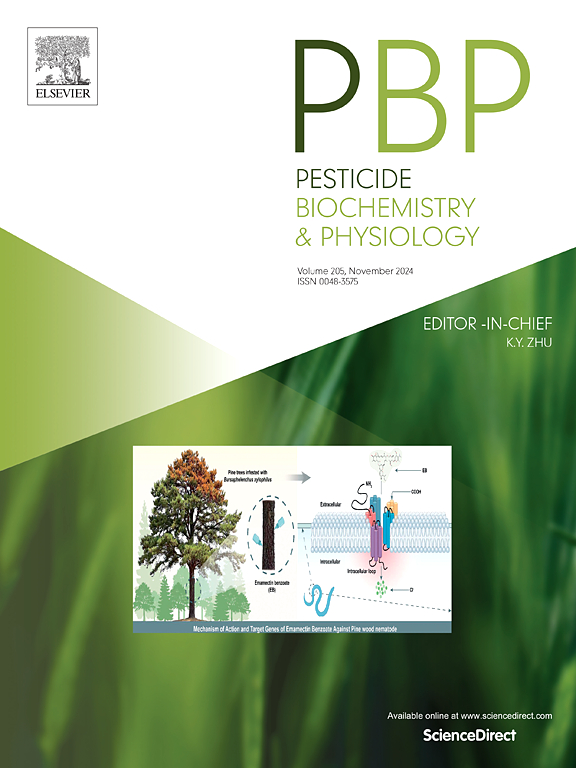A review on enzymatic colorimetric assays for organophosphate and carbamate pesticides detection in water environments
IF 4.2
1区 农林科学
Q2 BIOCHEMISTRY & MOLECULAR BIOLOGY
引用次数: 0
Abstract
To monitor pesticides, which have grown to be a significant environmental and public health concern, sensitive, selective, and economical analytical tools must be developed. With advantages including high sensitivity, quick processing, and the potential for on-site monitoring, enzymatic colourimetric assays have surfaced as a potential substitute for conventional pesticide detection, particularly for organophosphate (OPPs) and carbamate pesticide detection. The toxicological effects of pesticides on humans and the environment are examined first in this review, followed by examining the concepts and mechanisms behind enzyme activity and colourimetric methods. Besides, single and double-enzyme-mediated colourimetric techniques are also studied to detect OPPs and carbamate pesticides. Furthermore, colourimetric smartphone platforms and paper-based devices have both garnered a lot of attention. These advanced approaches offer many pesticide detection options, from high-sensitivity lab-based procedures to on-site and in-field technologies. The fourth section of this review employs newly published studies to explore the applicability of these approaches for onsite OPPs and carbamate pesticide detection. Lastly, the challenges associated with enzymatic colourimetric assays, such as matrix effects and enzyme stability, and prospects for current and future research are discussed.

酶法比色法检测水环境中有机磷和氨基甲酸酯类农药研究进展
农药已成为一个重要的环境和公共卫生问题,为了监测农药,必须开发敏感、有选择性和经济的分析工具。酶促比色法具有高灵敏度、快速处理和现场监测潜力等优点,已成为传统农药检测的潜在替代品,特别是有机磷(OPPs)和氨基甲酸酯类农药检测。本文首先探讨了农药对人类和环境的毒理学影响,然后探讨了酶活性和比色法背后的概念和机制。此外,还研究了单酶和双酶介导比色法检测有机磷农药和氨基甲酸酯类农药。此外,比色智能手机平台和基于纸张的设备都获得了很多关注。这些先进的方法提供了许多农药检测选择,从高灵敏度的实验室程序到现场和现场技术。本综述的第四部分采用新发表的研究来探讨这些方法在现场opp和氨基甲酸酯类农药检测中的适用性。最后,讨论了与酶比色分析相关的挑战,如基质效应和酶稳定性,以及当前和未来研究的前景。
本文章由计算机程序翻译,如有差异,请以英文原文为准。
求助全文
约1分钟内获得全文
求助全文
来源期刊
CiteScore
7.00
自引率
8.50%
发文量
238
审稿时长
4.2 months
期刊介绍:
Pesticide Biochemistry and Physiology publishes original scientific articles pertaining to the mode of action of plant protection agents such as insecticides, fungicides, herbicides, and similar compounds, including nonlethal pest control agents, biosynthesis of pheromones, hormones, and plant resistance agents. Manuscripts may include a biochemical, physiological, or molecular study for an understanding of comparative toxicology or selective toxicity of both target and nontarget organisms. Particular interest will be given to studies on the molecular biology of pest control, toxicology, and pesticide resistance.
Research Areas Emphasized Include the Biochemistry and Physiology of:
• Comparative toxicity
• Mode of action
• Pathophysiology
• Plant growth regulators
• Resistance
• Other effects of pesticides on both parasites and hosts.

 求助内容:
求助内容: 应助结果提醒方式:
应助结果提醒方式:


